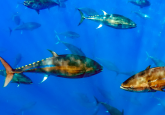Novel turtle sex identification technique could aid conservation

A research team have developed a non-invasive method for sex identification of sea turtle hatchlings to help assess the impact of climate change on sex ratios.
Unlike in humans, the sex of sea turtles and other reptiles can be influenced by environmental factors. Specifically, the sex of sea turtles is determined by the temperature of the nest; warmer temperatures produce females and cooler temperatures produce males.
Due to the increase in global temperatures as a result of climate change, there is an urgent need to develop a method for reliable identification of sex in turtle hatchlings so that sex ratios can be accurately assessed.
As hatchling turtles lack external sexual organs and heteromorphic sex chromosomes, it is very challenging to identify the sex of hatchling sea turtles and, until now, there are very limited methods of doing so.
Now, a research team from Florida Atlantic University (FL, USA) have developed a minimally invasive technique that enhances the ability to measure neonate turtle sex ratios at population levels across nesting sites worldwide.
![]() New insights into sexual differentiation in frogs
New insights into sexual differentiation in frogs
A team of biologists has shone a light on the complex evolution of sexual differentiation in different species of frog from the family Pipidae.
“The challenges inherent in the methods that are currently being used to identify the sex of neonate turtles with temperature-dependent sex determination is what inspired us to look for an alternative approach,” remarked study author Jeanette Wyneken. “Results from our study provide the field of reptile conservation, and in particular, turtle conservation and management, with a valuable new tool that can be used to accurately assess the sex ratios of hatchlings.”
The technique, described in a recent studied published in Scientific Reports, used a Western blot immunoassay approach to identify differences in sex-specific protein expression patterns in blood samples of a freshwater turtle (Trachemys scripta) and a marine turtle (Caretta caretta).
Results from the study demonstrated that anti-müllerian hormone can be detected in blood samples of neonate male turtles but not female turtles and so can be utilized as a sex specific marker.
Furthermore, after verifying the sex of the turtles using histology or laparoscopy, the researchers discovered that their method is 100% reliable for 1 to 2 day-old hatchlings and 90% reliable for 177 day-old juveniles.
Not only is the new method highly reliable, but it is much quicker than current techniques, minimally invasive and hatchling turtles can be released immediately after being tested. Widespread use of this method could be a crucial first step in assessing and minimizing the impact of climate change on turtle species.
“Information from our study should enable other scientists and managers to precisely monitor changes in sex ratios that might arise as a consequence of changes in temperature over time,” explained Boris Tezak, senior author on the paper. “It also will help them to estimate how climate change will affect future generations of hatchlings and allow for expedited evaluation of management strategies used to help recover imperiled sea turtles and other reptile species with temperature-dependent sex determination.”





